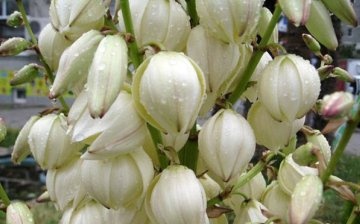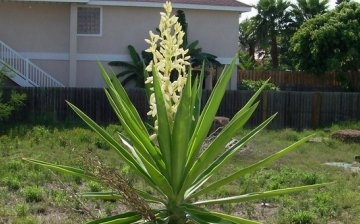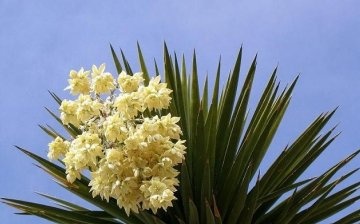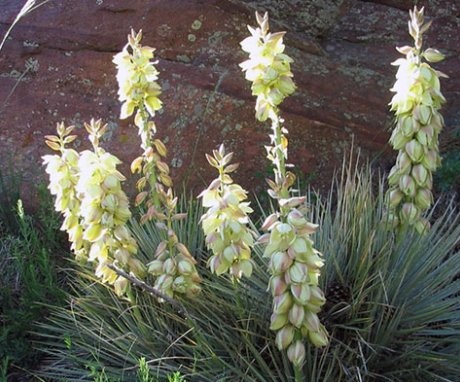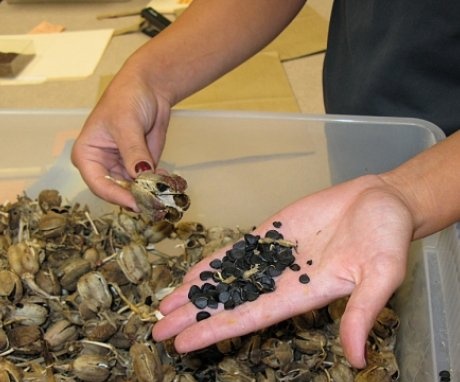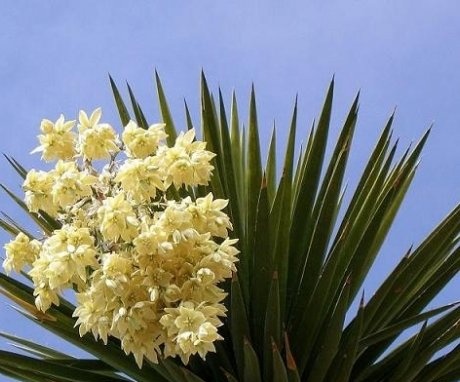Yucca: tips for growing and caring during the flowering period
Yucca is not only quite attractive, but also an unpretentious plant to care for. This explains the high level of popularity of the flower among many gardeners.
Content:
Description of yucca
Yucca refers to categories of evergreens... It has xiphoid leaves, which are located on the trunk of the flower, as well as white paniculate inflorescences, which resemble lanterns in their appearance.
The appearance of the yucca resembles a shrub or a small, small-branched tree.
This plant is capable of bearing fruit only at home. This is because yucca is a fairly thermophilic plant that can bear fruit under the appropriate conditions in North America. Yucca can also be pollinated with the help of a small butterfly that lives only in those parts.
To date, breeders have bred about thirty species of this plant, but in our area only two types of this plant are grown:
- Nice Yucca.
- Yucca filamentous.
This plant has a rather original appearance, which allows it to be grown not only in flowerpots, but also in the open area of front gardens.
Flowering care
This plant is able to easily tolerate partial shade, but for its full development disembarkation must be done in places that are sufficiently illuminated by the sun. In order to provide this plant with full flowering, it is necessary to choose the right soil for it.
It should consist of sod, leafy soil, as well as humus and sand. It is better to mix all these components in the same amount.
Watering the plant:
- This plant requires moderate watering.
- The need for watering a given plant is determined by the state of the leaves.
- If the yucca foliage is swirling, then it is necessary to water it.
- The main thing is that a moderate amount of water is poured under the bush.
- Lack of moisture negatively affects the flowering of this plant. In the event that you overdo it with the amount of water and it stagnates, then you can expect rotting of the yucca root system.
- In the event that yucca is not grown in garden conditions, then it is necessary to water it in the winter.
- In winter, the frequency of this procedure is significantly reduced.
If the plant grows indoors in a pot, then it needs to provide fresh air.
To do this, you can open the window or take it out into the street. Yucca is especially acutely aware of the lack of fresh air during the flowering period. That is why, after flowering of this plant, it needs to provide regular access to fresh air.
In the event that the plant is grown at home, then its foliage must be regularly wiped with a damp cloth.
Breeding features
This plant propagates by seeds:
- Before disembarking, it is necessary properly prepare the soil.
- The soil for planting this plant must be not only dry, but also very well drained.
- Seeds are planted at the end of winter.
- Seed planting is carried out at a temperature of 18 to 24 degrees.
- This will allow the plant to germinate much faster than at low temperatures.
Seedlings of this plant are most often grown within two years. After this period, the yucca must be planted in open ground.This action is performed in the spring, when the night temperature is not lower than +7 degrees.
Also, this plant is very often propagated by root cuttings or offspring.
Yucca propagation by root cuttings is carried out in the spring. This requires dig up an adult plant, which has already bloomed, and separate a piece of root 10-12 centimeters from it. This stalk is placed in the ground. It must be watered regularly, and after the first shoots appear, the soil must be loosened.
To reproduce yucca by offspring, you must:
- Pinch off a leaf from this plant and place it in a container with water.
- In no case should a leaf from a mother plant be cut off with scissors, as it will not take root.
- If the tip of the leaf begins to rot in water, then the water must be changed, and the tip must be pinched off.
- After the offspring puts down its first roots must be planted in the ground.
- The leaf can not be placed in water, but planted immediately into the ground, but this method of reproduction will be more difficult, since the gardener will not be able to see whether it has sprouted or not.
Yucca pests and diseases
During the flowering period and before it, the gardener must most carefully monitor the plant and limit the access to it of various pests that can negatively affect flowering. Also, diseases can have a negative impact on the flowering of this plant.
Most often, yucca is affected by pests such as scale insects or slugs.
In the event that a scabbard attacked this plant, then it will be covered with brown plaques. In order to get rid of this parasite, it is necessary to wipe the yucca leaves daily with a swab, which is moistened with water, and once a week to use cotton wool moistened with vodka. The most effective method of dealing with slugs is insecticides. You can buy them in specialized stores. These means are used to fight slugs in accordance with the instructions.
Very often on yucca yellow-orange spots appear:
- This phenomenon can be observed at the end of winter.
- In these spots, harmful bacteria develop, which not only negatively affect the flowering of the plant, but also its growth and development in general.
- To combat this disease, it is necessary to use the appropriate insecticides.
- Very often, yucca leaves can turn yellow, which negatively affects the overall impression of the plant.
The reasons for the yellowing of the leaves can be:
- Keeping the plant in a warm enough place during the winter.
- Abundant watering.
- Incorrect lighting.
By eliminating these causes, yucca leaves will regain their attractive appearance, which will positively affect its beauty during the flowering period.
In order to provide this plant with a full and exuberant flowering, which begins in June and ends in August, it is necessary to strictly adhere to all the rules for caring for this plant.
It is also necessary to limit yucca from damage by various diseases and pests, as this also negatively affects the flowering of the plant. If you adhere to all these rules, then you can use yucca to decorate not only a separate flowerpot, but also a whole flower bed.
More information can be found in the video.



